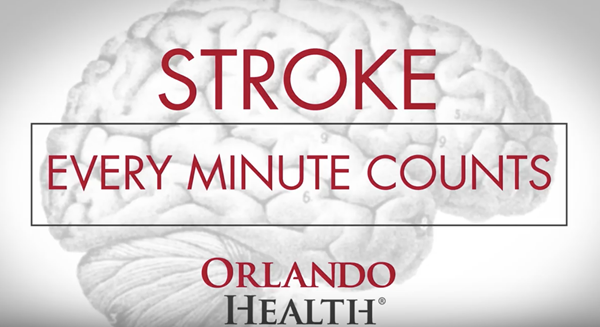A stroke can be sudden and debilitating—it’s the third leading cause of death in the U.S. and the leading cause of long-term disability. But the faster a stroke is treated, the better chance a person has for recovery. That’s why it’s important to know the signs of stroke, so you can get help for you or others, fast.
What is a Stroke?
A stroke is a sudden interruption of blood going to the brain. It can be caused by two primary reasons: 1) an ischemic stroke occurs when a clot blocks blood flow or 2) a hemorrhagicstroke happens when a blood vessel ruptures. In addition to the traditional stroke, a person may experience a transient ischemic attack (TIA). Often called a mini stroke, the symptoms last only a few minutes and resolve themselves within an hour. Although the TIA may leave no lasting symptoms, can serve as a warning that a more significant stroke may occur.
Stroke Risk Factors
A number of risk factors can increase the likelihood of strokes. Older adults, males, and people of African American, Hispanic and Native American origin have a higher risk of ischemic strokes; though strokes can happen to anyone. A family history of heart attacks or strokes also increases the risk. Preexisting health conditions including hypertension, diabetes, previous stroke or TIA, atrial fibrillation, obesity, carotid artery disease, conditions that would make you clot quickly such as cancer and other types of blood disorders, as well as behaviors such as cigarette smoking, cocaine use and excessive drinking can increase your risk.
Lifestyle changes that include maintaining an optimal weight, increasing exercise, eating a healthy diet, keeping your blood pressure under control, and eliminating smoking, drug use and minimizing alcohol can help.
Know the Signs of a Stroke
If you suspect you or someone else is having a stroke, time is of the essence. One of the easiest ways to remember the signs of a stroke and the need for a speedy response is the acronym FAST.
F: Face—look for drooping or numbness on one side of the face. If the droopiness is subtle, ask the person to smile and see if their mouth is uneven or lopsided.
A: Arm —is one arm weaker than the other, or numb? A person suffering a stroke may feel some weakness or may be unable to move one side at all.
S: Speech—a person may be unable to speak or may be difficult to understand, with slurred or stuttered speech. Or, a person may speak clearly, but the words don’t make sense in the context of the conversation.
T: Time—some medical treatments that can be used depend on administering them soon after a stroke has occurred.

A person having a stroke may have other symptoms in addition or separately from those outlined in FAST, such as sudden confusion, difficulty understanding the speech of others, sudden trouble seeing in one or both eyes, trouble walking, dizziness, loss of balance or coordination, or a severe headache with no known cause or history of headaches.
Why You Should Always Call 911 for a Suspected Stroke
If you or someone you know has stroke symptoms, call 911. Stay with the person until help arrives. It’s better to wait for emergency help to arrive instead of driving to the hospital for several reasons. When emergency personnel arrive, they can begin treatment immediately—faster than if you drove the person to the hospital), and the paramedics will know which hospital to go to that is a primary stroke center or comprehensive stroke center.
If you are the one experiencing symptoms, it is imperative that you do not drive yourself. Your symptoms may evolve or get worse, and if you have weakness or difficulty seeing while behind the wheel, you put yourself and others in danger.
Treatment of Strokes—Why Sooner is Better
One of the first treatments a stroke patient might get is a clot buster called Alteplase It is an effective drug for quickly dissolving the clot, with the potential to reduce long-term disability associated with stroke, but must be administered within the first four and a half hours after the stroke began.
If that window has passed, doctors may remove the clot with a procedure called a thrombectomy, which involves inserting a catheter through an artery in the groin to the blocked artery in the brain, to remove the clot and restore blood flow. This procedure has very positive results on certain patients, within 24 hours of a stroke.
Once the 24 hour window has passed, the options for treatment are narrowed to physical therapy, to help the person regain strength or compensate for the damage done by the stroke.
If you or someone you know has signs of a stroke, don’t wait. Get help, start by calling 911.
Find Out Your Stroke Risk
Most strokes involve a clot that blocks blood flow to your brain (ischemic stroke). Sometimes, a weakened blood vessel breaks, causing bleeding (hemorrhagic stroke). A temporary clot can cause a “mini stroke” or TIA (transient ischemic attack). The smallest stroke can damage your brain or warn of a bigger stroke to come. It can limit your ability to think, talk or move. If you see symptoms, call 911 right away.
Learn More Now





